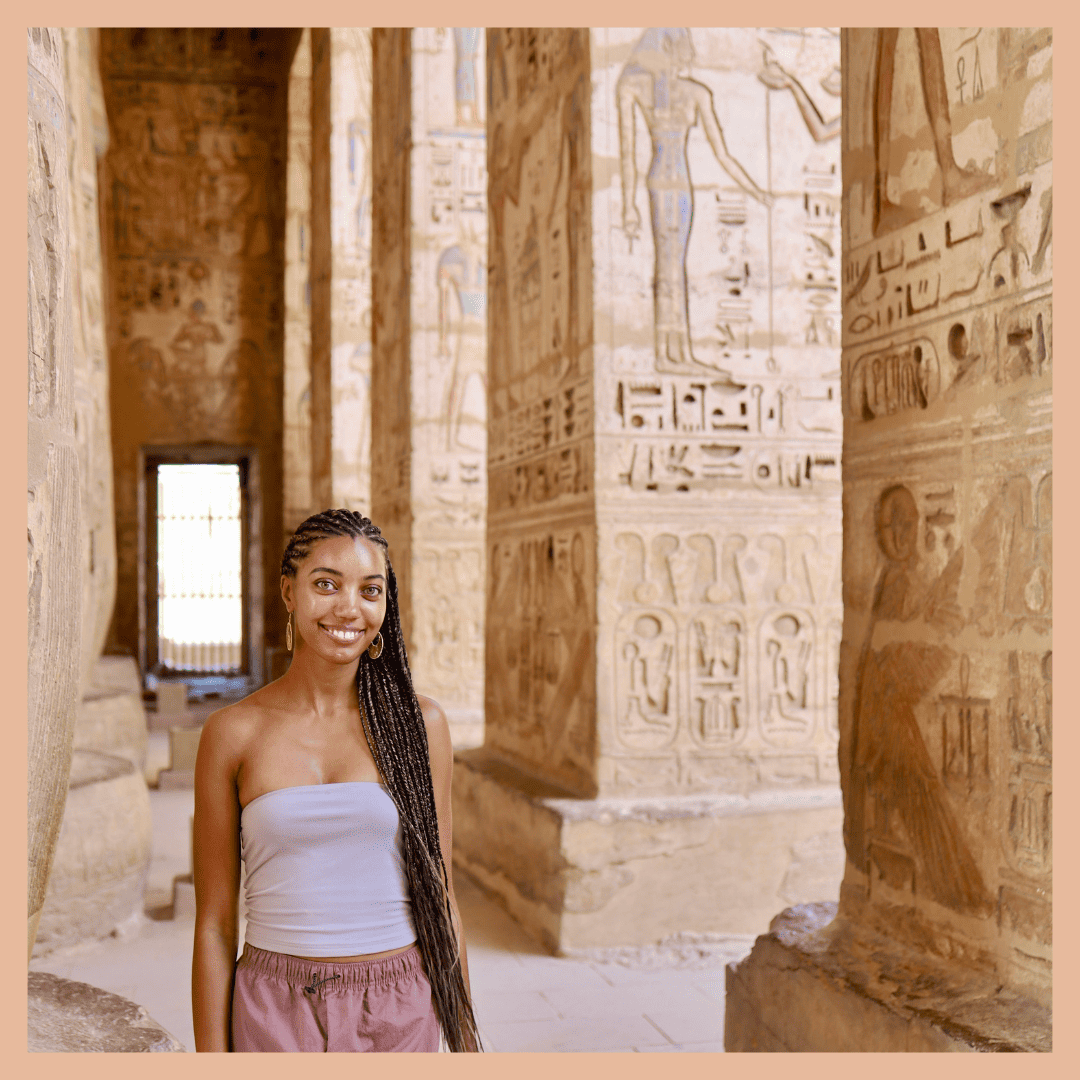
Planning your Luxor itinerary? From ancient temples to royal tombs and scenic Nile cruises, this guide covers the top things to do, plus tips on costs and how to make the most of your time in this historic city.
Disclosure: This post may contain affiliate links, which means we’ll receive a commission if you purchase through our links, at no extra cost to you. Please read full disclosure for more information.
Imagine exploring ancient temples, sailing the Nile, and stepping inside tombs carved with intricate hieroglyphics.
Luxor, Egypt’s open-air museum, is where history comes alive—offering unforgettable experiences that take you back thousands of years.
If you’re heading to Egypt, Luxor is a destination you simply can’t skip.
We recently traveled to Egypt, and when planning our itinerary, we realized we’d need more than just one day in Luxor.
So we spent three days in Luxor to really take it all in.
Getting there is part of the adventure. You have several options:
- Bus: The most budget-friendly choice at around $7 USD for a 10-hour ride.
- Train: A more comfortable option, with 2nd-class seats costing around $87 USD for the same journey.
- Flight: The fastest and most convenient, with 1.5-hour flights from Cairo starting around $104 USD.
Since we’re all about saving money when we travel, we took the overnight bus.
Whichever way you get there, Luxor is well worth it.
In this guide, I’ll share the top things to do, along with tips and costs, so you can make the most of your Luxor itinerary.
Luxor Temple
Built by Amenhotep III and Ramses II, this temple located on the Nile River’s eastern bank is iconic for its colossal statues and towering obelisks.
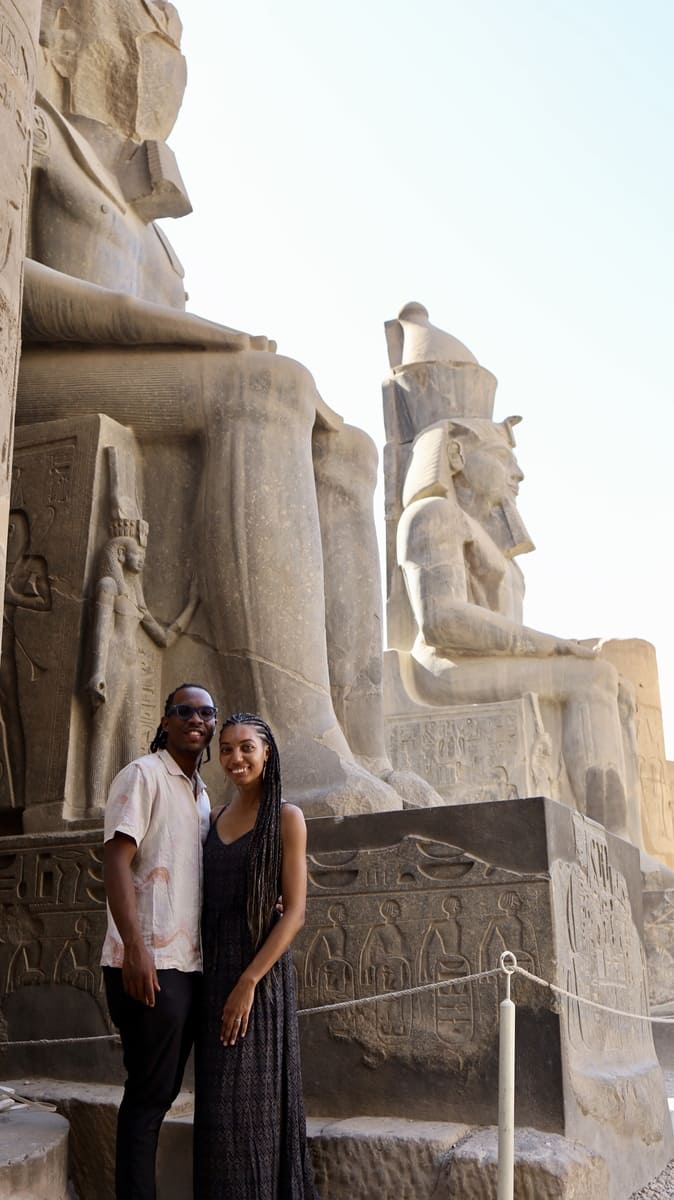
Walking into Luxor Temple feels like stepping into another era.
The towering columns are so massive, they make you feel tiny in comparison.
Arrive early or visit in the evening when it’s beautifully lit and seems even larger than life.
It’s incredible to think about the scale and precision it took to build them thousands of years ago.
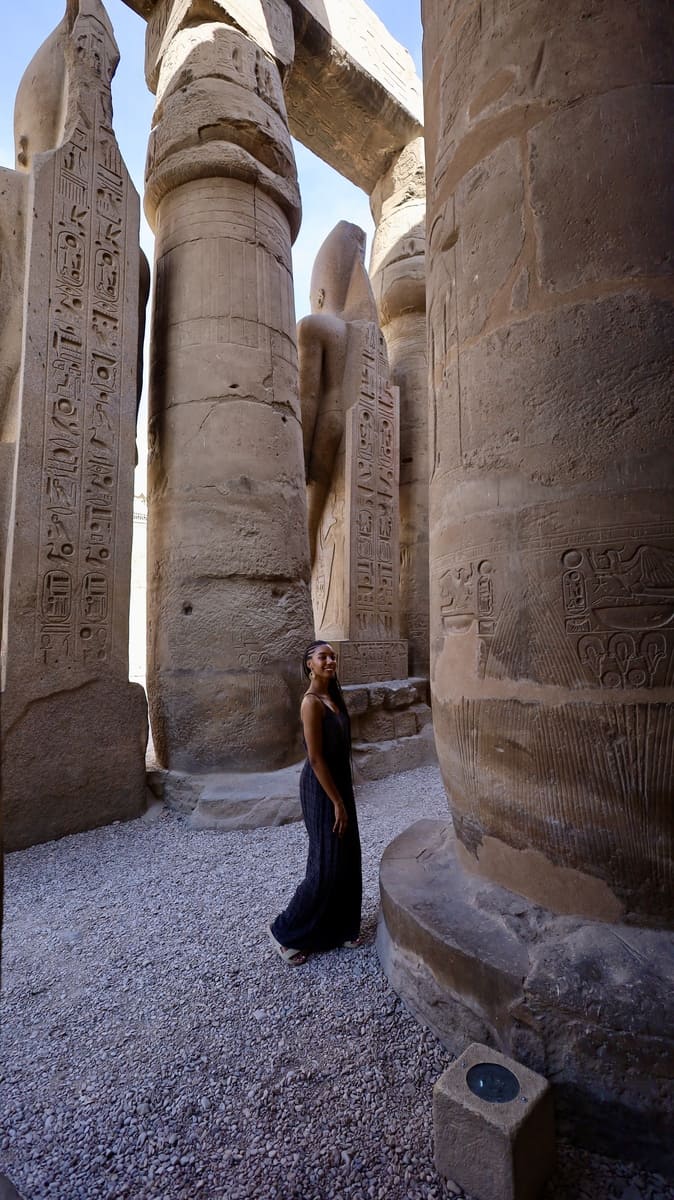
As you explore, you’ll likely meet locals offering to take your photo—for a tip, of course.
This is common, so it’s worth keeping some small bills on hand if you want a few candid shots.
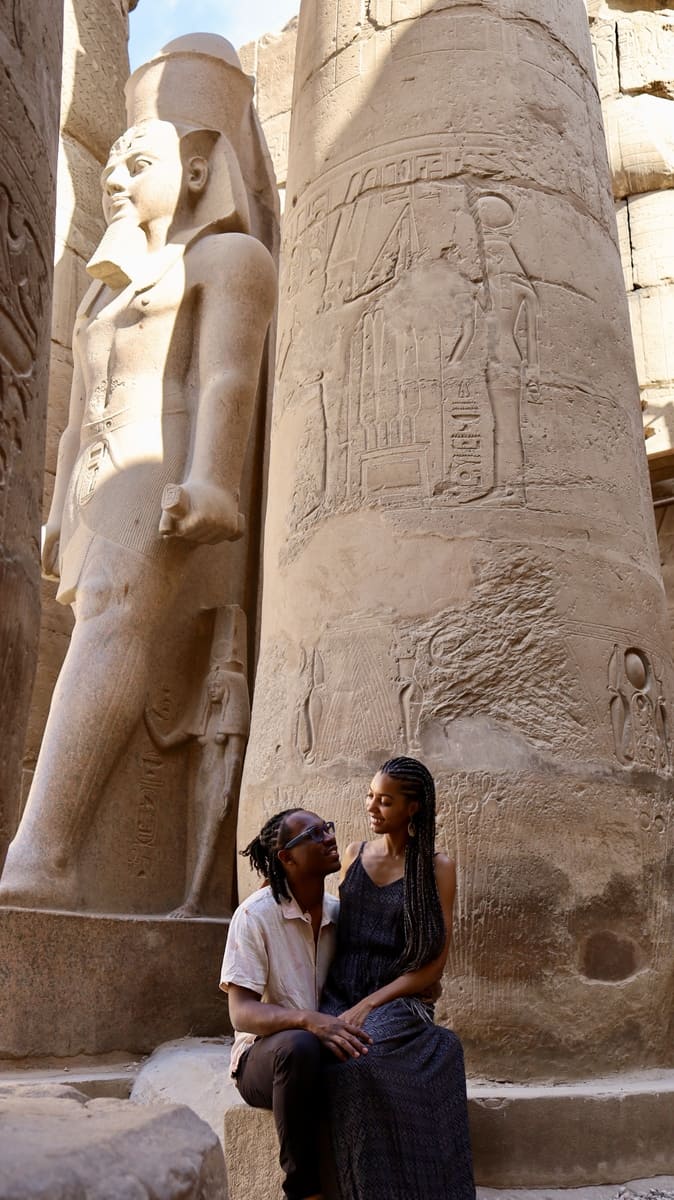
When navigating Luxor Temple you’ll notice the pathways are wide and flat and are accessible for wheelchair users.
Why You Should Visit: One of Luxor’s most iconic temples, known for its towering columns and grand entrance.
How Much to Budget: ~$10 USD entry fee, card only.
RELATED ARTICLE: How Many Days is Enough for Egypt?
Karnak Temple
If Luxor Temple leaves you speechless, Karnak Temple will take it up a notch.
It’s even more expansive, with colossal statues, intricate carvings, and towering obelisks that seem to stretch endlessly into the sky.
Visiting both temples is well worth it.
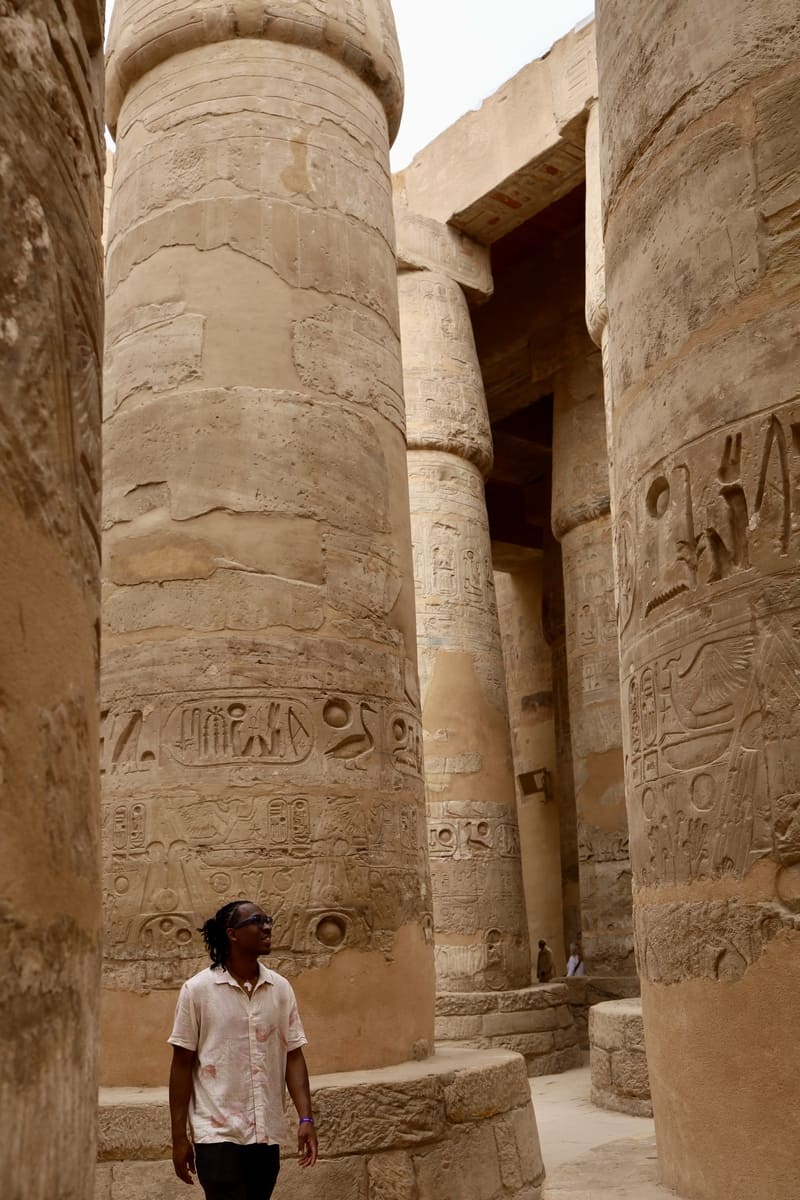
Wear comfortable shoes since there’s a lot of walking involved!
Even still, Karnak Temple is well-paved and has wheelchair-accessible areas.

The scale and detail at Karnak made me appreciate just how advanced ancient Egyptian architecture was.
The complex is huge, with multiple buildings and hidden corners.
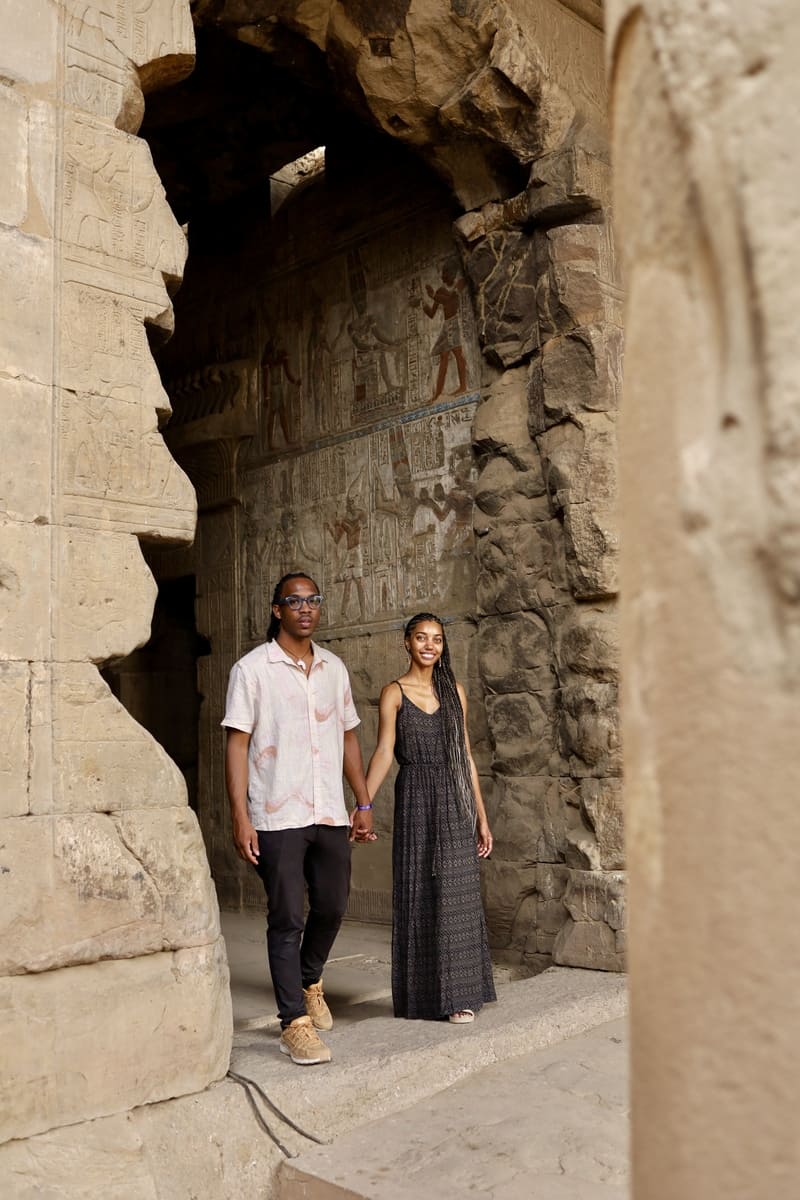
Some of the local security guards might offer to show you locked-off areas or give you a mini private tour.
They’ll even offer to snap a few photos of you—but they’ll expect a tip.
If you’re not interested, it’s best to politely decline and keep moving.
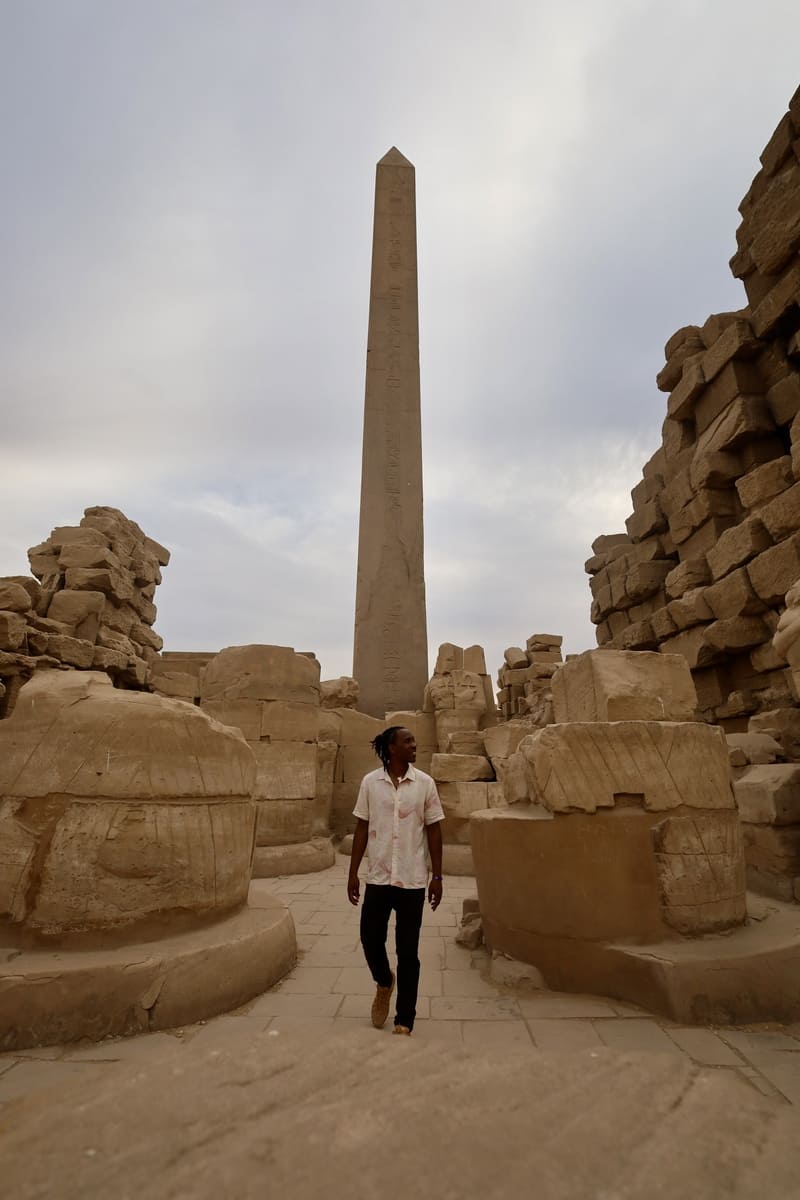
Why You Should Visit: This is one of the largest religious complexes ever built, and it will blow you away.
How Much to Budget: ~$12 USD entry fee, card only.
RELATED ARTICLE: Top Things to Do in Cape Town South Africa
Avenue of the Sphinxes
Stretching nearly two miles between Luxor Temple and Karnak Temple, the Avenue of the Sphinxes features over 1,000 sphinx statues.
While many are damaged or missing, the section closer to Luxor Temple is better preserved.
We chose to walk the avenue, a 30-minute stroll from Luxor Temple to Karnak Temple.
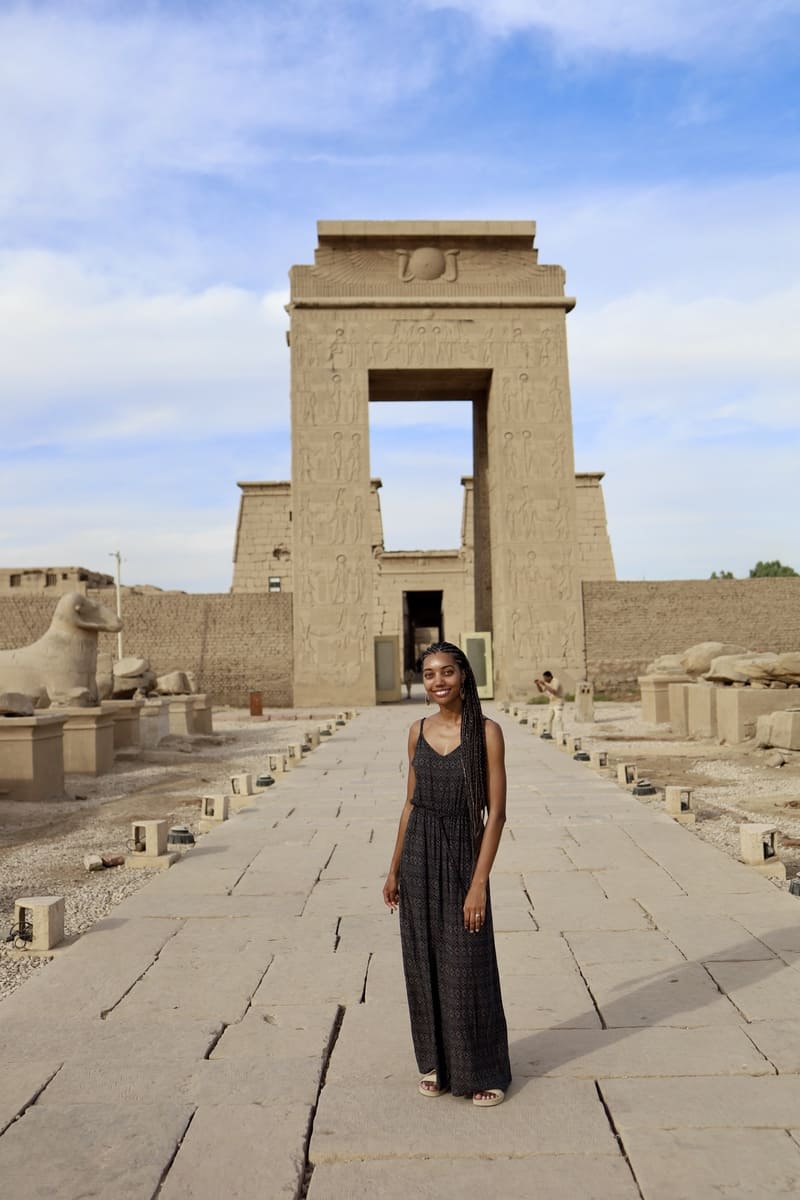
Along the way, we encountered almost no one—most visitors opt for taxis, private drivers, or horse carriages.
Just before reaching Karnak Temple, there’s a ticket office where you’ll need to pay for entry into the temple so you can continue down the avenue.
Why You Should Visit: This 2-mile pathway connects Luxor and Karnak Temples, lined with over 1,000 sphinx statues.
How Much to Budget: Free to walk the avenue (entry fees apply for temples).
RELATED ARTICLE: How to Visit Table Mountain
Al Sahaby Lane Restaurant
This rooftop restaurant offers a different perspective as it overlooks the Avenues of the Sphinxes.
The climb up multiple flights of stairs is worth it, but note that there’s no elevator.
Their menu is full of authentic Egyptian dishes, making it hard to choose.

We ordered falafel, grilled meats, vegetable tajin, and fresh juices.
The restaurant is family-friendly, and the service we received was warm and attentive.
Why You Should Visit: Who doesn’t love a good rooftop featuring authentic Egyptian cuisine with panoramic views of Luxor Temple?
How Much to Budget: We spent ~$11.26 USD for lunch for two.
Horse Carriage Throughout the City
About seven years ago, my husband visited Luxor on a solo trip and met Mohammed and Ali—two local Egyptians who showed him around the city in their horse and carriage.
They even welcomed him into their home for a meal, giving him a genuine glimpse into local life.
Fast forward to March 2025: As we walked along the Avenue of the Sphinxes, a familiar voice called out, offering a ride.
My husband instantly recognized Mohammed and Ali, and to our surprise, they remembered him too.
Later that evening, they picked him up to explore the lively market festivals around Luxor, just like old friends reconnecting.

It was such an unexpected and special full-circle moment—proof of how travel can create lasting bonds.
If you’re looking to explore Luxor in a more authentic way, Mohammed and Ali are trustworthy guides who will show you around for a fair price, sharing genuine insights and local experiences.
How much to budget: We’ve included their contact information in our Explore Egypt Travel Guide (coming soon!) so you can connect directly and arrange your own memorable ride.
Felucca along the Nile River
Before coming to Egypt, I had no idea what a felucca was, but I kept hearing it was a must-do experience.
A felucca is a traditional wooden sailboat with no motor—just a simple sail catching the wind.
It’s a slow, peaceful way to drift along the Nile River, away from the busy streets and noise.

Go near sunrise or sunset for cooler temperatures and stunning views.
Why You Should Visit: A serene sail that lets you experience Luxor from a unique perspective.
How Much to Budget: At a resort you can expect to pay ~$50 USD for a felucca ride. But if you negotiate in Luxor at the port you can plan to pay ~$10 USD or less (These prices are for the whole boat, not per person).
Valley of the Kings
From the outside, the Valley of the Kings looks unassuming—just a dusty landscape tucked into the hills.
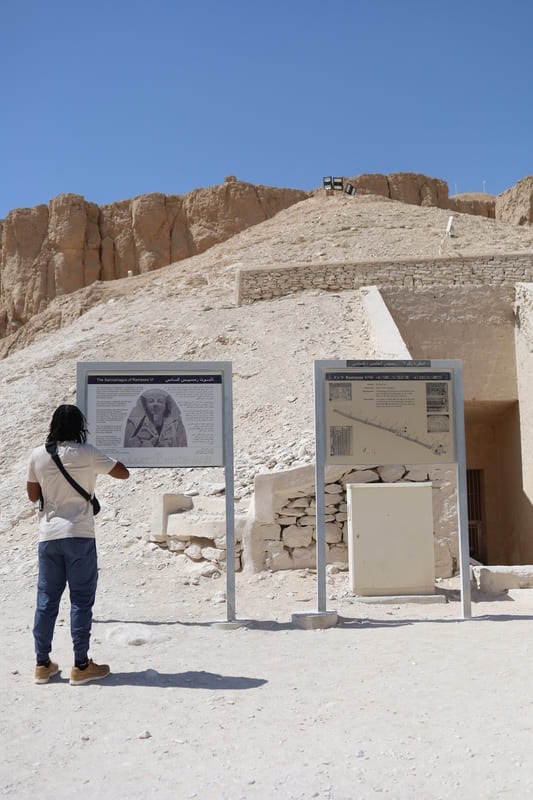
But inside are the tombs of over 60 pharaohs and high-ranking nobles, including the famous tomb of Tutankhamun.
The vivid colors and intricate hieroglyphics are nothing short of stunning, and it’s hard to believe how well-preserved these details are after thousands of years.
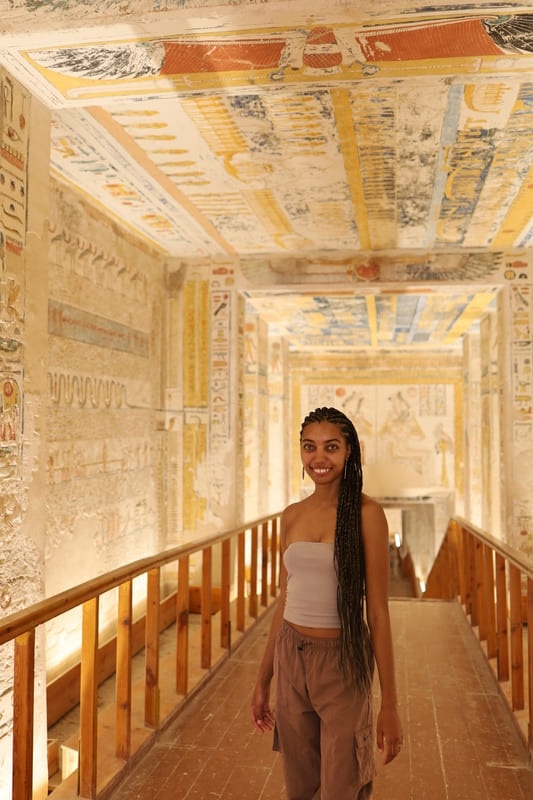
When you arrive, you’ll get your tickets from the visitor’s center, and right next to the ticket window is a booth where you can buy tram tickets (20 EGP or ~$0.40 USD per person) to take you from the entrance to the tombs.
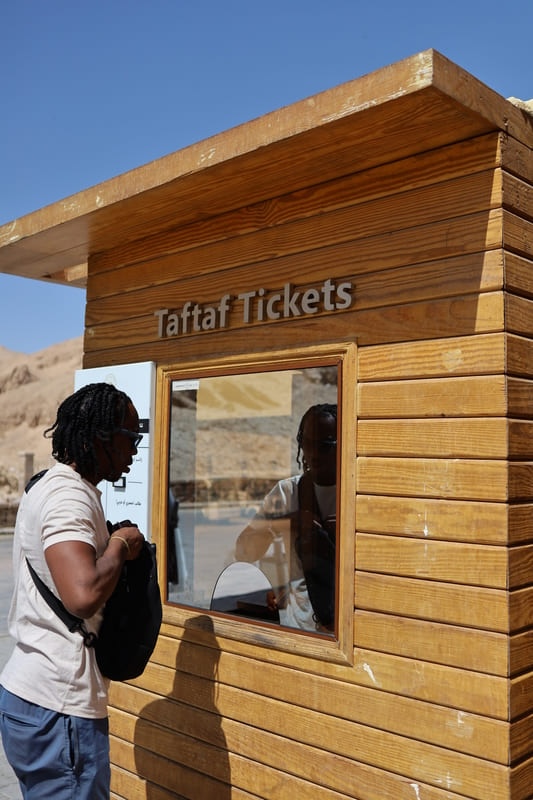
It’s a short ride, but it saves some energy—especially in the heat.
The general entry ticket includes access to three tombs.
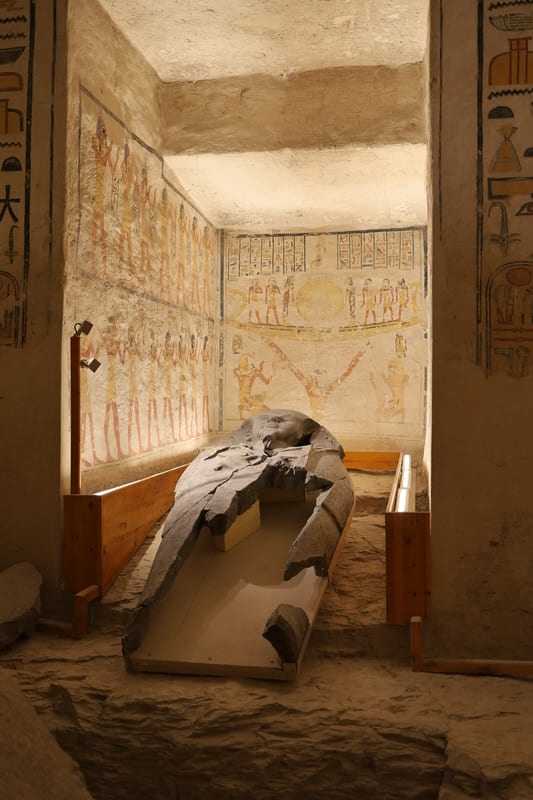
As you enter each tomb, a guard punches a hole in your ticket, so choose wisely!
We chose to visit KV 2 Ramesses IV, KV14 Tausert-Setnakht, KV 15 Sety II, and paid extra for KV9 Ramesses V & VI.
These are the tombs included in your entry fee:
- KV1 – Ramesses VII
- KV2 – Ramesses IV
- KV6 – Ramesses IX
- KV8 – Merenptah
- KV11 – Ramesses III
- KV14 – Tausert-Setnakht
- KV15 – Sety II
- KV16 – Ramesses I
- KV43 – Thutmose IV
- KV47 – Siptah
If you’re willing to splurge, there are a few additional tombs you can pay extra for:
- KV9 – Ramesses V & VI: 220 EGP per person (~$4 USD)
- KV17 – Seti I: 2000 EGP per person (~$40 USD)
- KV62 – Tutankhamun: 700 EGP per person (~$14 USD)
Just note that you pay for and receive the tickets for all the tombs you plan to visit before getting on the tram.
Also, some of the tombs are labeled wheelchair accessible, and they have boarded surfaces that you could wheel on.
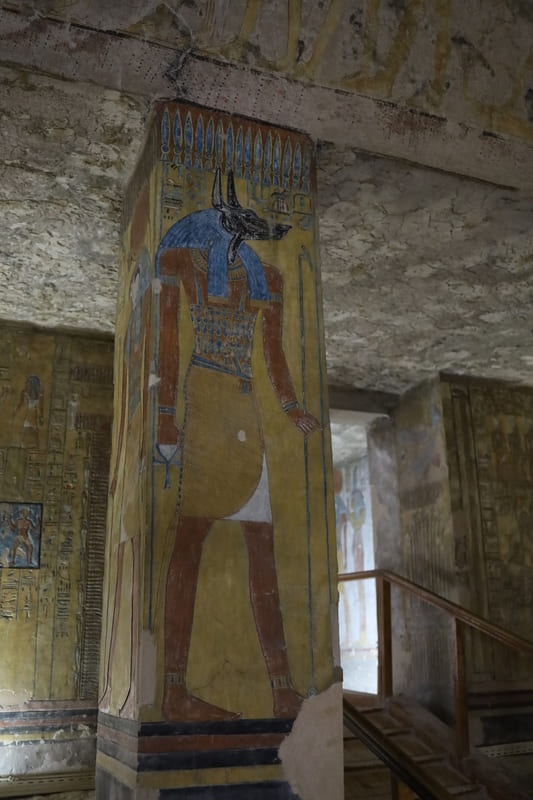
Why You Should Visit: You get to see the intended resting place of Egypt’s most powerful pharaohs, including King Tut.
How Much to Budget: The entry fee is 750 EGP (~$15 USD) for a general ticket (half price for students with valid ID), including access to three tombs to be paid with card only. The tram costs 20 EGP or ~$0.40 USD and is cash only. Plan for extra costs if you want to visit the premium tombs.
Valley of the Queens
While less famous than the Valley of the Kings, the Valley of the Queens is still worth a visit.
Four tombs are open for viewing, including those of Titi, Khaemwaset, and Amunherkhepshef.
The standout here is the Tomb of Nefertari, dedicated to the beloved wife of Ramses II.
It’s easily one of the most stunning tombs in Egypt, with vivid colors, intricate carvings, and a pink granite sarcophagus.
The entrance fee to Nefertari’s tomb is steep, but it’s one of those once-in-a-lifetime experiences.
Valley of the Queens is noted to be accessible by wheelchair.
Why You Should Visit: Home to Nefertari’s Tomb, often called “the Sistine Chapel of Ancient Egypt.”
How Much to Budget: 220 EGP (~$4 USD) for a general ticket, including access to three tombs. Half price for students with a valid ID. Tomb of Nefertari: 1,400 EGP (~$30 USD) – Expensive, but unforgettable if it fits your budget. Payment is by card only.
RELATED ARTICLE: Top Places to Visit in Mahe Seychelles
Hatshepsut Temple
The Temple of Hatshepsut stands out from the rest of Luxor’s temples, with its unique design built into the cliffs.
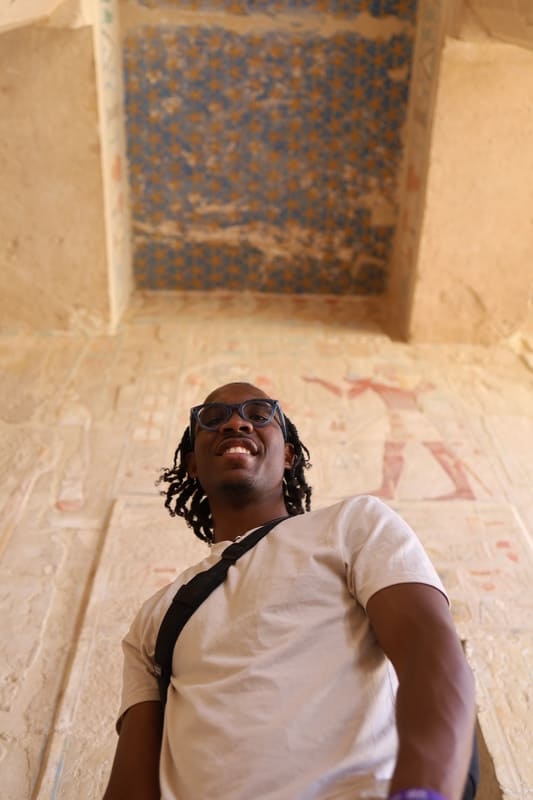
It’s dedicated to Egypt’s most successful female pharaoh, Hatshepsut, who ruled as a king and left behind an incredible legacy.
The temple’s terraces rise dramatically against the mountains, and the carvings and statues inside tell stories of her reign and expeditions.
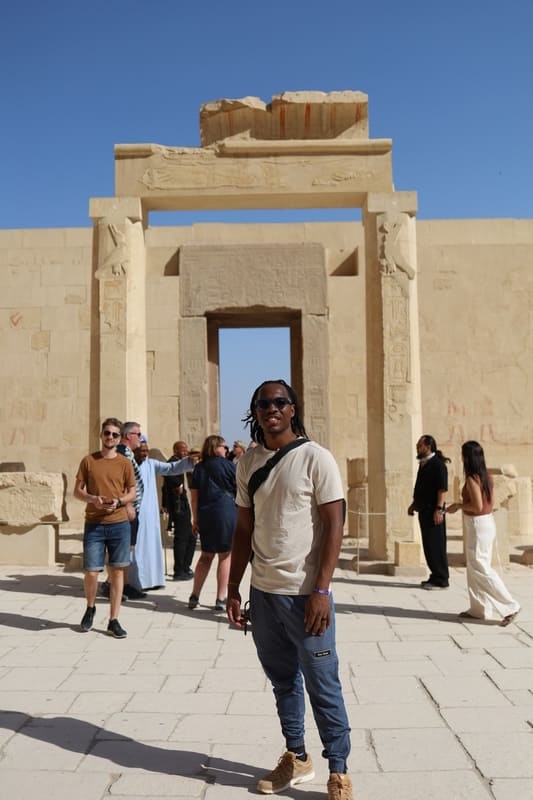
While the temple is impressive, it can get crowded, so consider visiting early in the morning or later in the afternoon.
There are slopes alongside the stairs that make the temple wheelchair-accessible.
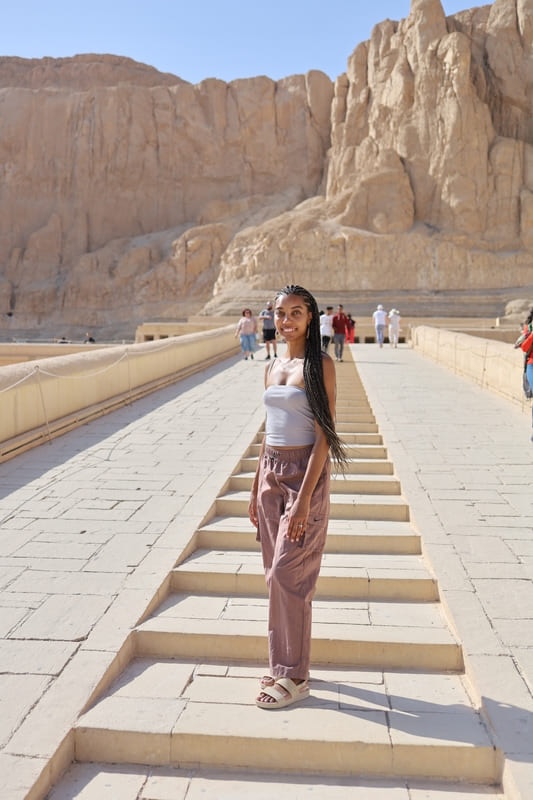
How Much to Budget: The entry fee is 440 EGP (~$8 USD). Credit card only.
Temple of Medinat Habu
Medinat Habu is one of Luxor’s hidden gems that we almost skipped, but I’m so glad we didn’t.
I don’t even like using the term “hidden gem” but this is exactly that.
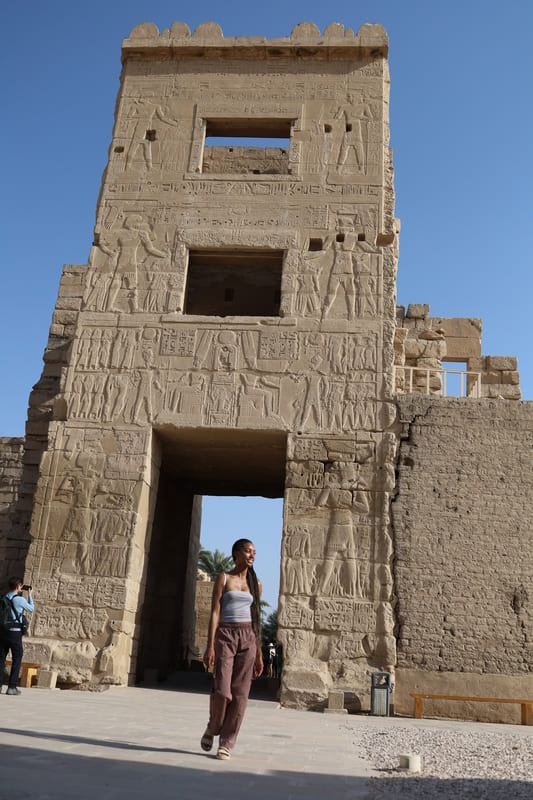
It’s often overlooked by tourists, but the temple is massive, beautifully preserved, and way less crowded than the more popular sites.
The ticket office was a few blocks away from the Temple of Medinat Habu, but it also serves as the ticket office for several nearby temples and tombs.
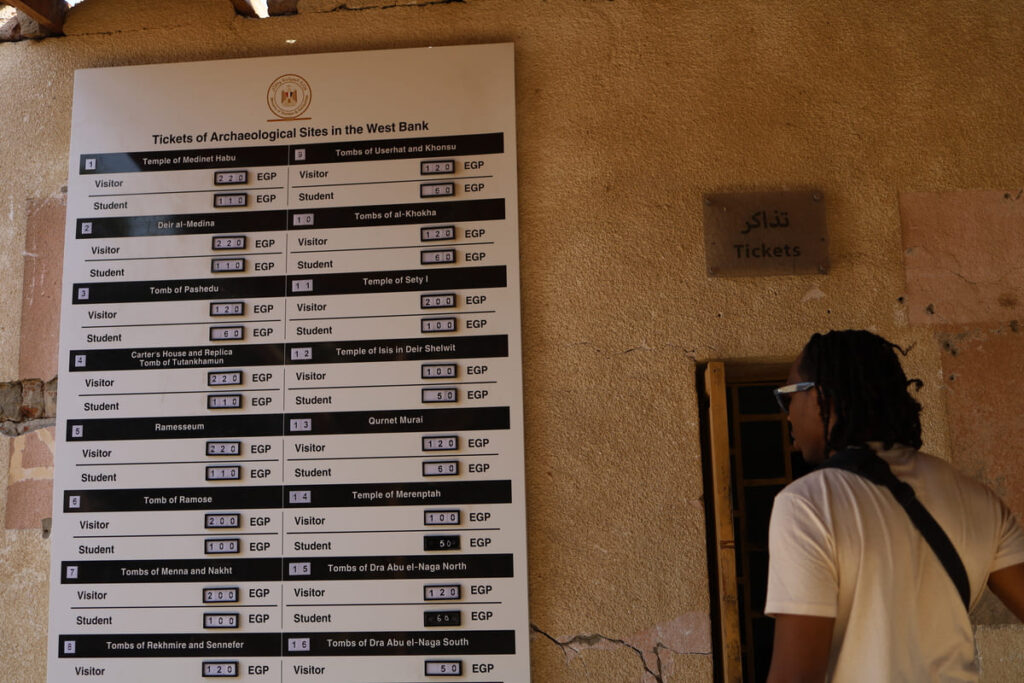
Once our driver dropped us at the entrance to Medinat Habu, there were a few stairs we had to walk down first.
The carvings are incredibly detailed, depicting scenes of battles, ceremonies, and the pharaoh’s achievements.
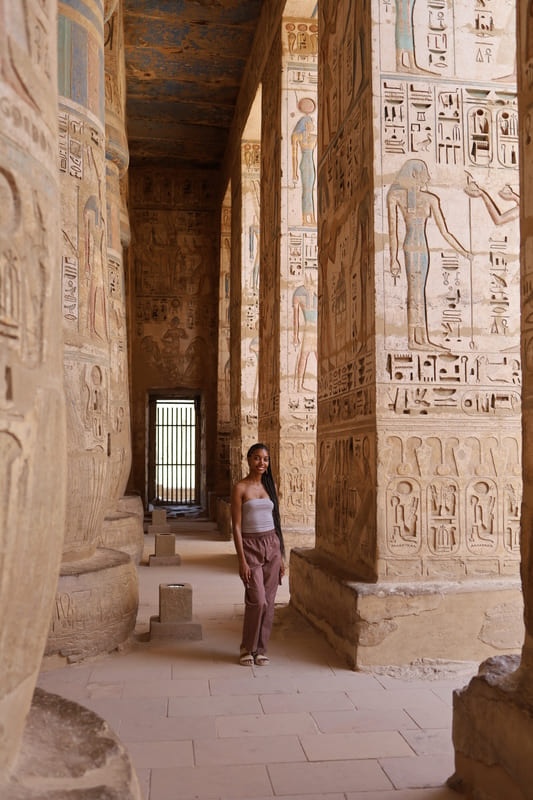
The colors here are some of the best-preserved in Luxor, and it’s fascinating to see how the ancient Egyptians used art to immortalize their victories.
Medinat Habu ended up being one of our favorite sites in Luxor, and it’s definitely worth visiting if you want a more lowkey experience.
How much to budget: Entry fee: 220 EGP (~$4 USD)
Colossi of Memnon
These two massive statues of Amenhotep III are all that remain of a once-grand mortuary temple.
Stop by briefly on your way to the West Bank sites—it’s a quick, worthwhile stop, and it’s free to visit.
Early morning is the best time to catch the statues in soft light and avoid busloads of tourists.
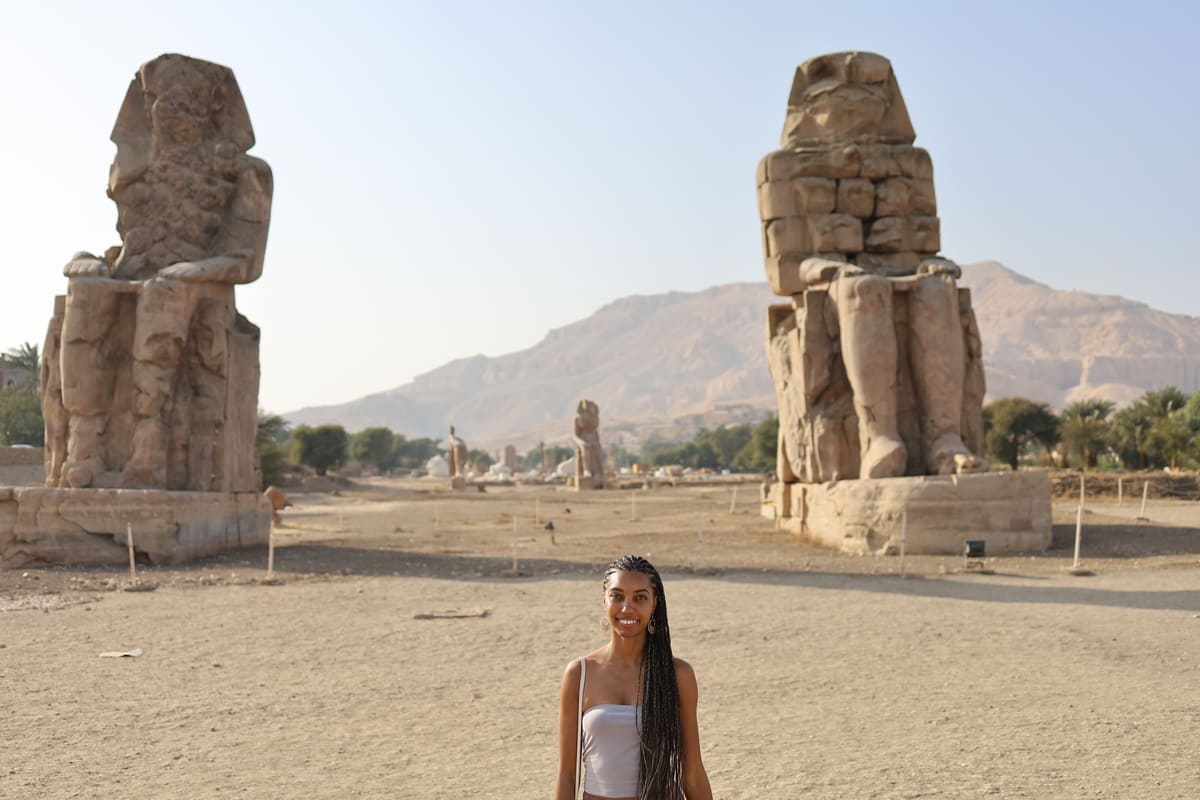
Locals may offer you small souvenirs or photos—be polite but firm if uninterested.
A fun fact: The statues were once believed to “sing” at dawn due to cracks in the stone after an earthquake.
The singing stopped after the earthquake damage was repaired.
Why You Should Visit: Massive statues of Amenhotep III that have stood for over 3,400 years.
How Much to Budget: Free to visit.
RELATED ARTICLE: Are Beaches Free in Seychelles?
Sunrise Hot Air Balloon over Luxor
If you’ve ever considered a hot air balloon ride but cringed at the price, Luxor is the place to do it.

We’ve seen hot air balloon rides go for ~$200 USD in Mexico City, ~$300 USD in Türkiye, and ~$450 USD in Masai Mara—but in Luxor, it’s an incredibly budget-friendly experience.
We paid just ~$27 USD per person for the second flight of the morning.
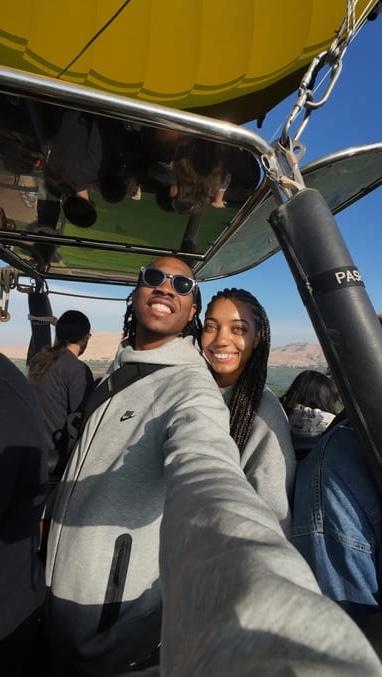
The sunrise flight costs about $20 USD more and is one hour earlier, but either time slot is worth it.
Our day started early, with a 5:30 AM pickup from the Hilton Luxor Resort.
After a short transfer to the launch site, we watched the massive balloons inflate as the sun was rising.
Once we got in the air, the ride was smooth and peaceful.
Seeing Hatshepsut’s Temple and the Nile River from above was surreal and floating over clay villages was a cool way to catch a glimpse of local life.
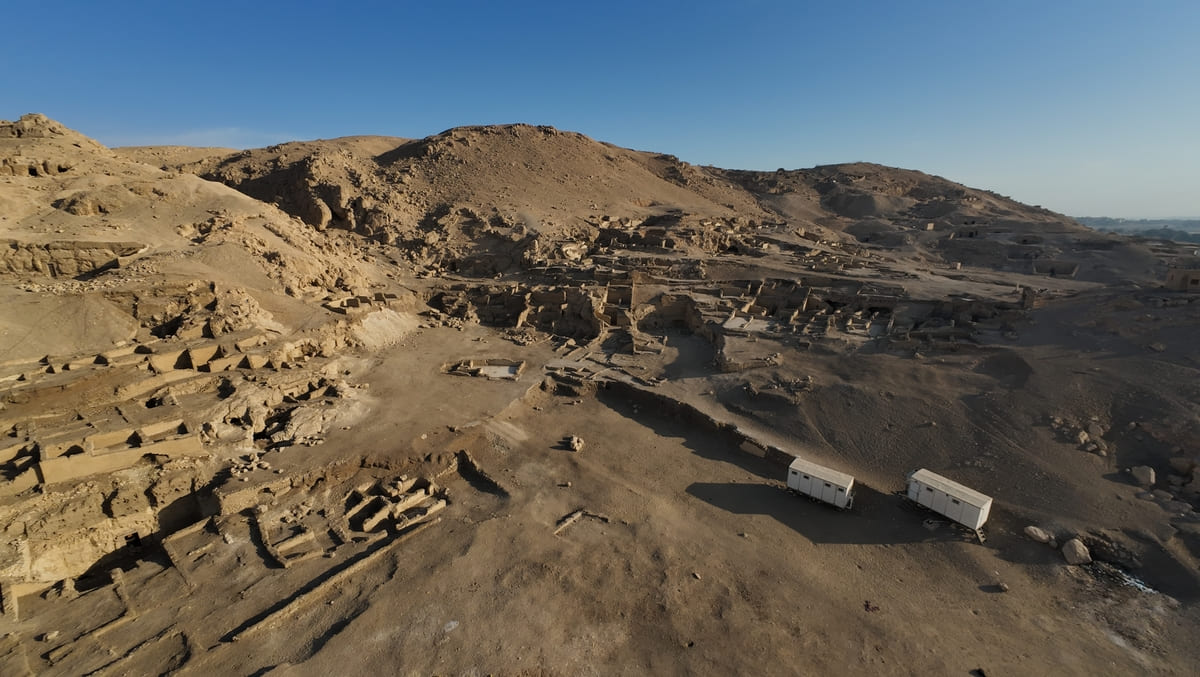
One tip—dress warmly.
Even though Luxor heats up fast, those early morning hours are chilly.
The ride itself lasted around 45 minutes, and by 7:30 AM, we were back at the hotel.
We booked the second flight of the morning because it was cheaper than the sunrise option by about $20 USD per person.
The night before, we got a message from the tour company saying, “Your second flight might be canceled. You should upgrade for $20 USD more per person.”
They claimed the weather might cause cancellations, but it felt like a pressure tactic.
We confirmed that we wanted to stick with the time we already paid for, and our second flight went off without any issues at all.

Don’t let this upsell tactic push you into spending more if you genuinely don’t want to.
Why You Should Do It: See Luxor’s temples and valleys from a whole new point of view.

How Much to Budget: Expect to pay ~$30-50 USD per person, depending on the flight time. Sunrise costs more, but the views can be especially stunning.
RELATED ARTICLE: Egypt Tips for First Timers
Stay in Luxor Hilton Resort & Spa
The Luxor Hilton Resort & Spa is perfectly positioned along the Nile River, offering stunning views, luxury amenities, and a relaxing atmosphere.
We loved the swim-up bar at the infinity pool, the cozy lounge area, and the shisha bar where you could unwind with local flavors.
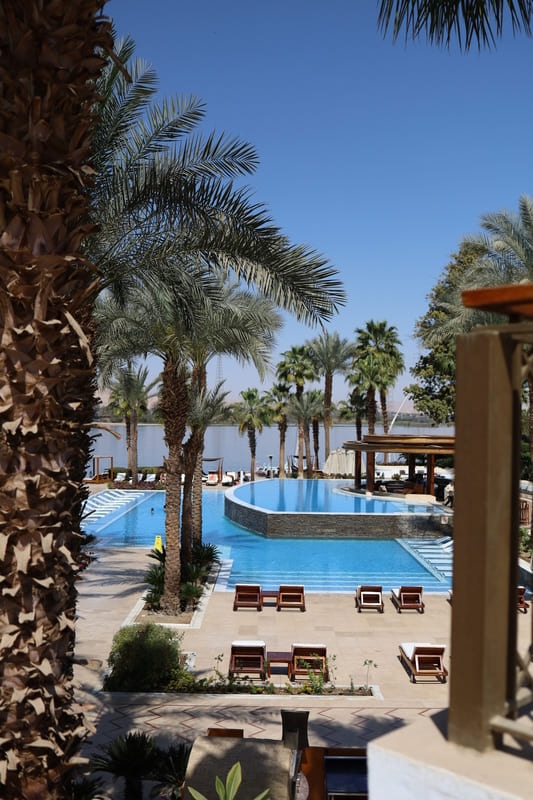
The resort has three bars and three restaurants, so there’s plenty of variety.
Since we have Hilton Diamond status, we enjoyed free breakfast every morning and room upgrades, making the stay even better.
The breakfast buffet was a standout—freshly made crepes and omelets, falafel, and Egyptian bread cooked right in front of you.
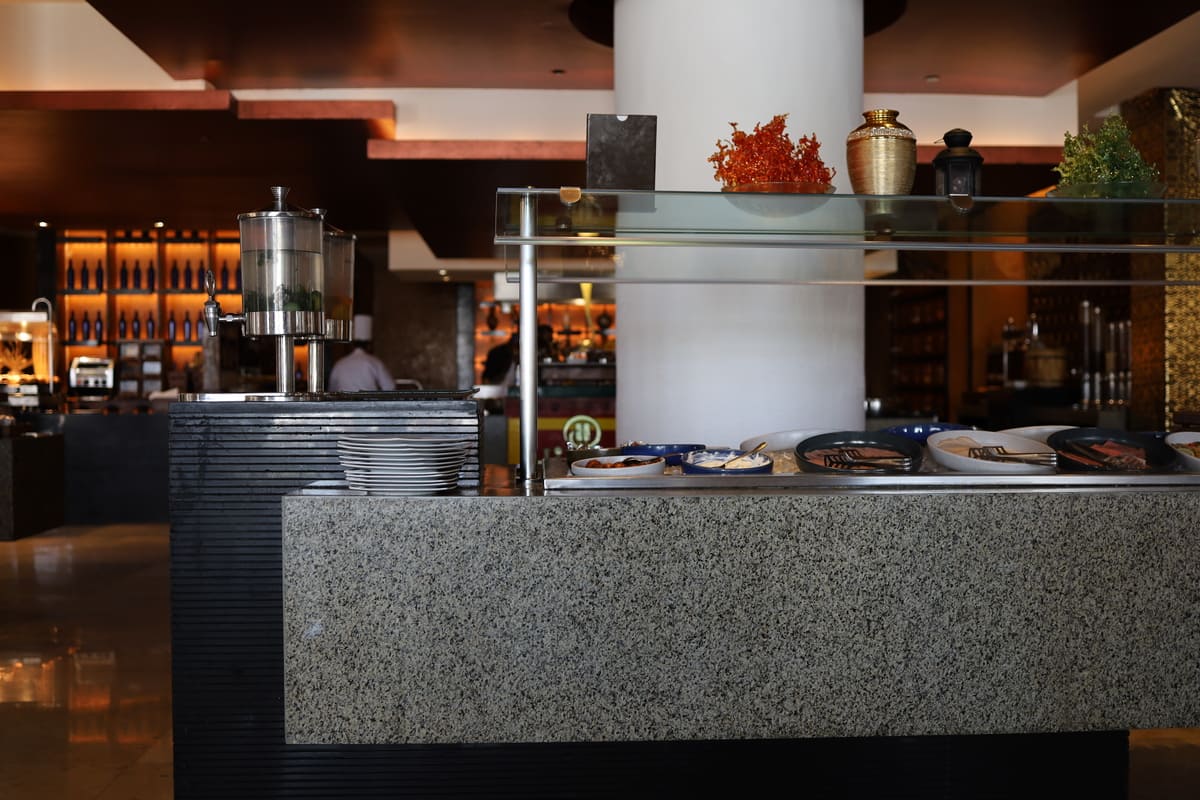
The fresh sugar cane juice was a unique treat, and the freshly squeezed orange juice was the perfect start to each day.
If you’re a fan of luxury travel on a budget, using hotel points and elite status perks can make a huge difference.
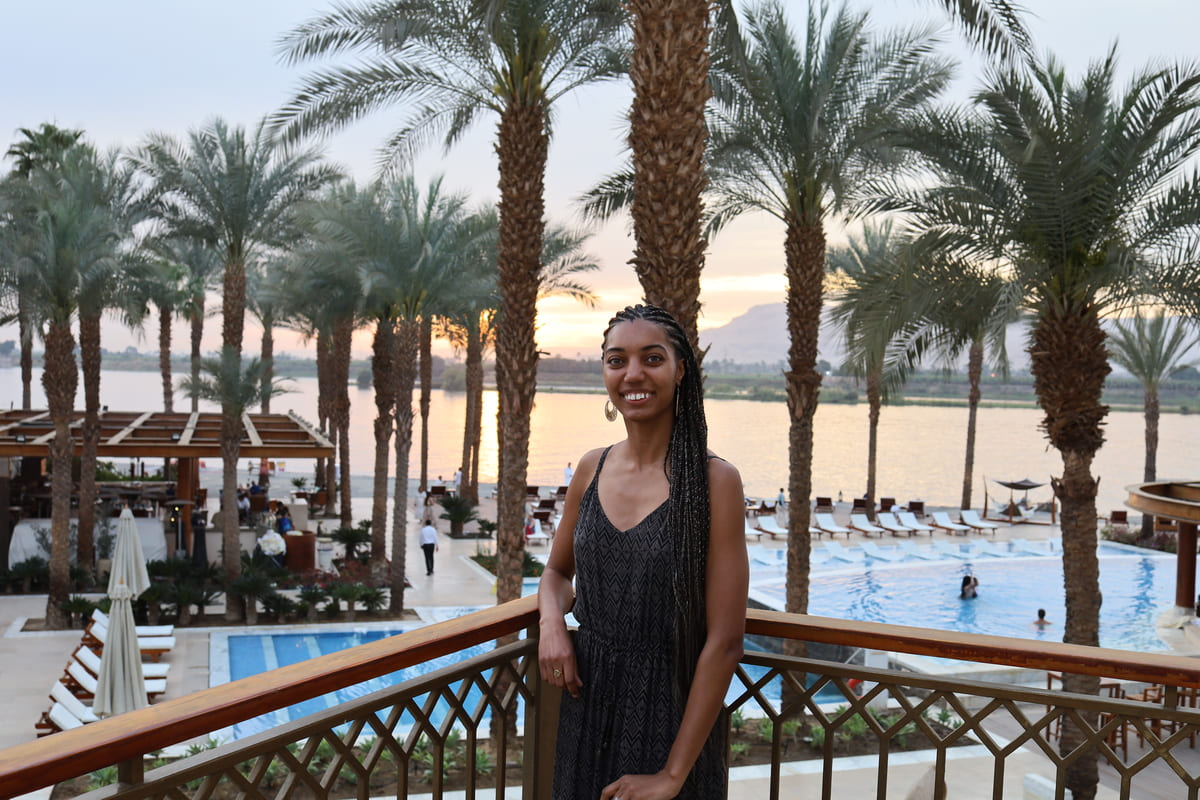
We’ve written detailed guides on how to use travel credit card points to maximize value—check them out for tips on how you can do the same!
Why You Should Stay Here: Luxurious amenities and stunning views of the Nile.

How Much to Budget: We paid 30k Hilton points per night for our 2-night stay. Room rates vary depending on time of year, but with points and status perks, you can save significantly.
RELATED ARTICLE: Waldorf Astoria Seychelles Platte Island Photos
Take a Trip to Aswan
If you’re visiting Luxor, Aswan is a natural next stop. It’s only about a 3-hour drive away, and we arranged a private driver for around $50 USD.
Prices are negotiable, so don’t be afraid to haggle a bit.
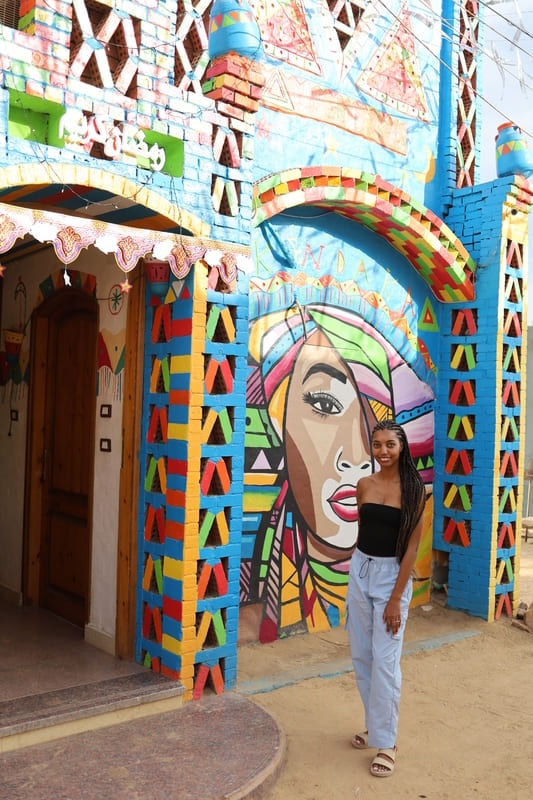
A tip for securing a good rate: If you find a reliable driver during your Egypt trip, ask about pricing for your other planned routes.
Drivers often have friends or family who can help, and they may offer better rates than booking online or through hotels.
When traveling between Luxor and Aswan, your driver will need a copy of your passport and a travel permit.
Be sure to confirm that your fare includes everything—permits, tolls, and any unexpected fees.
Aswan has so much to offer, including the Nubian Village, Abu Simbel, and Elephantine Island.
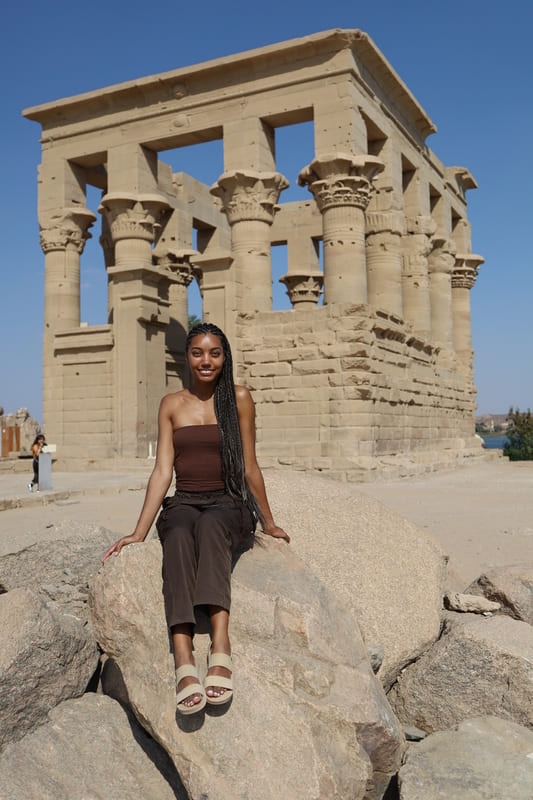
It’s a beautiful, laid-back city with a unique charm that makes it a must-visit.
Why You Should Go: Explore Abu Simbel, Nubian culture, and more just a short drive from Luxor.
How Much to Budget: We paid ~$50 USD for a private driver to take us from Luxor to Aswan. Rates vary depending on your negotiation skills and the driver you use. Our trusted driver’s details are included in our Explore Egypt Travel Guide. (coming soon!)
RELATED ARTICLE: Complete Guide to Nubian Village Near Aswan
RELATED ARTICLE: How to Plan a Trip to Seychelles for a Week
Luxor Egypt FAQs
What is so special about Luxor, Egypt?: Luxor is often called the “world’s greatest open-air museum” because it’s home to iconic ancient sites like the Valley of the Kings, Karnak Temple, and Hatshepsut’s Temple. All of the well-preserved temples, tombs, and monuments make it a must-visit for history and archaeology enthusiasts.
Is it safe to walk around in Luxor?: Yes, Luxor is generally safe for tourists, even when walking around. Like anywhere, stay aware of your surroundings and avoid dimly lit areas at night. You’ll likely encounter vendors who can be persistent, but a firm “no, thank you” / “la shukran” can do the trick.
Are the pyramids in Luxor?: No, the famous pyramids, including the Pyramids of Giza, are located near Cairo. Luxor is known for temples and tombs rather than pyramids.
Is 2 days enough for Luxor?: Two days is enough to see Luxor’s main highlights, including the Valley of the Kings, Karnak Temple, and a hot air balloon ride. However, if you’re really into history or want a more relaxed pace, at least three days would be ideal.
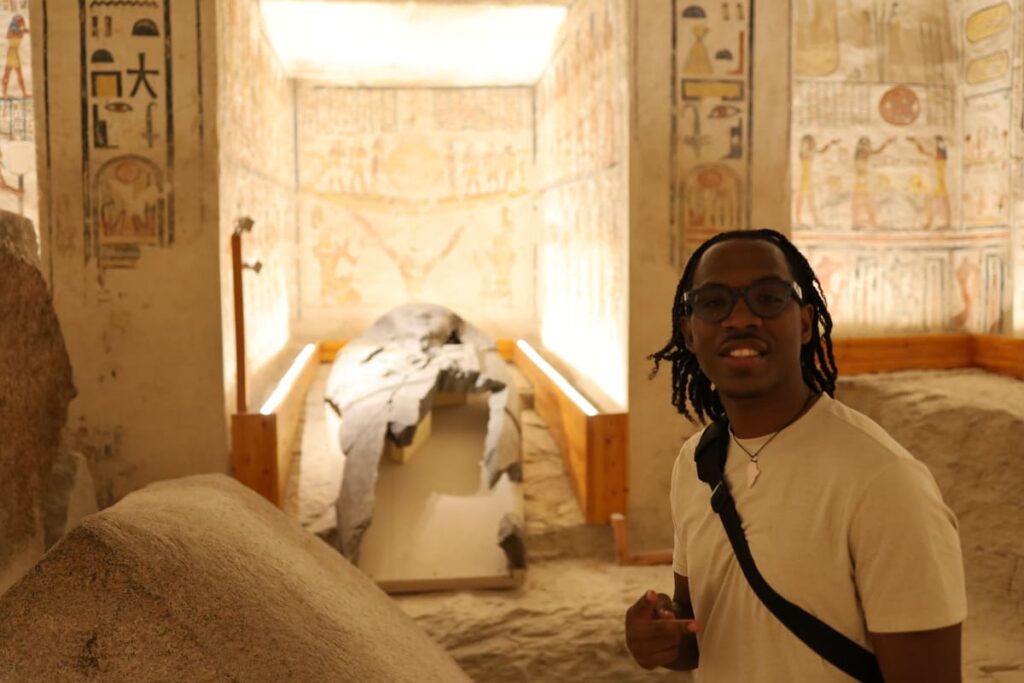
Is Luxor Worth Visiting?
Absolutely. Luxor is a place where ancient history comes to life, and the sheer scale of the temples and tombs is something you have to see to believe.
It’s one of those rare destinations where even travelers who don’t consider themselves “history buffs” are blown away.
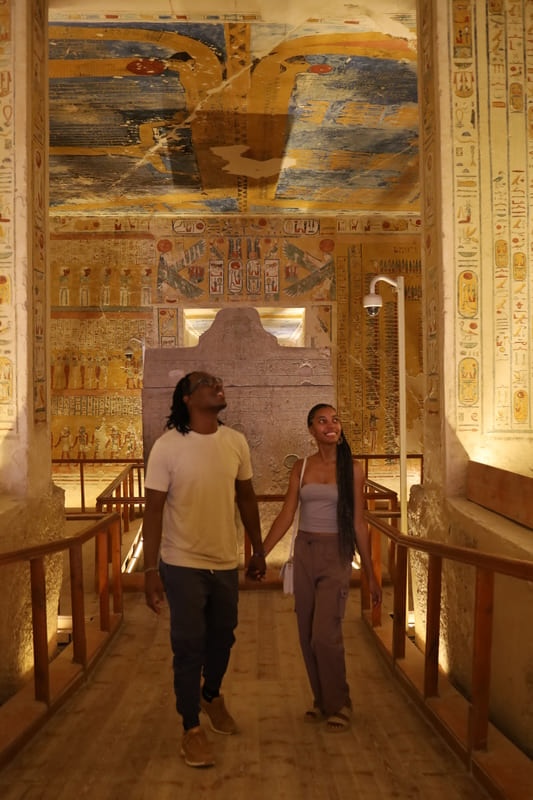
Whether you’re here for a couple of days or longer, Luxor offers experiences you won’t want to miss—hot air balloon rides over the Nile, exploring hidden tombs, and wandering through colossal temples.
Whether you’re chasing history, adventure, or unforgettable moments, Luxor delivers all that and more.
Continue planning your perfect Egypt trip with these articles:
- Best Things to Do in Cairo
- Best Things to Do in Aswan
- Important Egypt Travel Tips
- Ultimate Egypt Itinerary
Found this article helpful? Share it!



